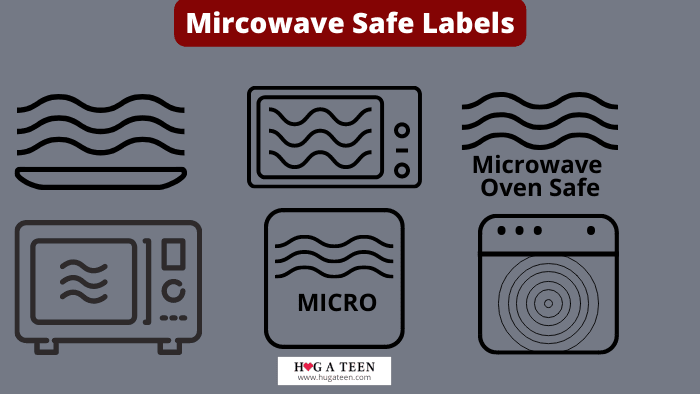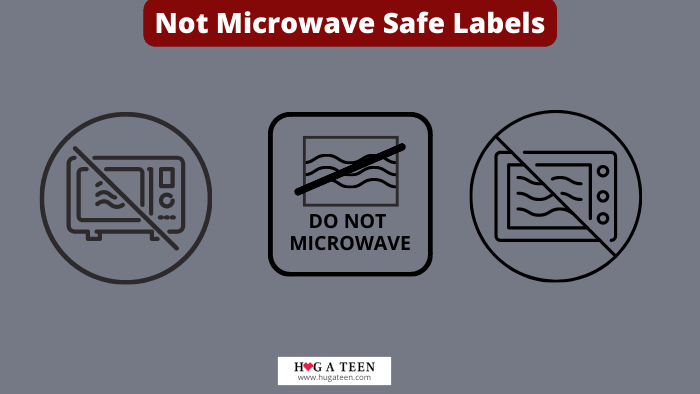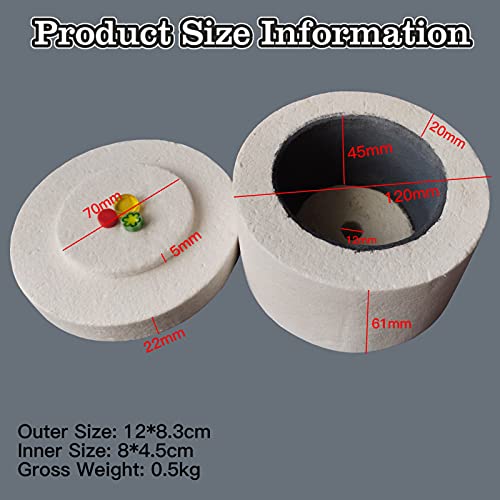We all enjoy the convenience of microwave ovens, but before you heat your delicious leftovers in a glass container, you might wonder if it’s safe to do so.
Glass containers come in various types, and not all are safe for the microwave.
Whether you’re not sure yourself, want to teach your teens safety precautions in the kitchen, or want to ensure you send your kids off to college with microwave-safe containers, you’ll find the answers in the article below.
Can You Microwave Glass?
You can microwave glass, but only if it is labeled as safe to use in the microwave. Microwave-safe glass is not only designed to withstand high temperatures but also handle extreme heat fluctuations from cold temperatures to high temperatures in a short amount of time.
Glass is made in many different ways, with some types of glassware having metals and dyes, usually added during the manufacturing process. Containers that have metals, dyes, or air pockets in the glass can cause sparks, leak chemicals or cause the glass to crack or break when subjected to fluctuating temperatures.
The good thing is that most glass manufacturers will indicate whether the glass is microwave-safe or not. The glass will have a label showing a microwave image at the bottom or sides. You might also find the microwave-safe label on the box.

However, not all will come with one, so you might need to do a microwave test. You can do this by placing a cup of cold water into the glass bowl and popping it into the microwave for a minute on high.
If the dish in question is hot to touch and the water is still cold, then the glass is not safe to use in a microwave oven. If the glass bowl is slightly warm and the water is heated, then it is safe to use in the microwave.
Look For The Microwave Safe Label
The best way to determine if a glass dish is safe to use in the microwave is by looking for the microwave-safe label. Usually, manufacturers will indicate whether the type of glass item is safe to use in the microwave or not.

Most of them use a small microwave image at the bottom of the glass or on the side. Others will have the image on the product packaging or include it in the product description.
The microwave image is usually a rectangular box, with circles on one side to indicate the knobs and a few squiggly wavy lines on the other side of the box. Some will come paired with the word ‘microwave’ while others will have the word ‘micro.’
Since some glassware does not come with a label, even though they are safe to use in the microwave, it would be best to buy from brands known for microwave-safe glass containers. Still, you can check if the glassware is safe by doing the microwave test.
It is also important to note that microwave-safe glassware could still crack or shatter in the microwave. Ideally, you should limit how much time glassware stays in the microwave, keeping that time under 5 minutes on high, regardless of whether the glassware is considered microwave-safe or not.
How long can you microwave glass?
You can microwave glass for not more than 5 minutes. Even if the glassware is designed to be microwave-safe, overexposure to high temperatures could crack the glass. Be sure to mix the contents of the glass container to distribute the heat evenly. Two to three minutes is a sweet spot to prevent the glass from overheating and still get your food warm enough.
Why does glass break in the microwave?
Glass breaks in the microwave because tiny air bubbles are trapped in the glass, usually resulting from the manufacturing process. When heated, these air bubbles expand, creating a hollow space in the glass. This then results in cracks or complete shattering of the glass.
You might also like to read How Long Does Super Glue Take To Dry?
Why did my glass bowl break in the microwave?
Your glass bowl broke in the microwave probably because it is not safe for use in the microwave.
You may have left it in the microwave for too long, and it could not withstand the extreme temperatures.
If the glass has a small crack in the glass, this can also cause the glass to crack when heated. The temperature differential between the cold glass and warm food causes them to expand unevenly and can cause the glass to split open where the cracks are.
Can a microwave melt glass?
Glass is usually considered microwave safe and won’t melt in a microwave. However, it is possible to melt glass if you use a microwave kiln or if you heat the glass to a very high temperature first using a blow torch.
Most glass melts at 1400 to 1600 degrees Fahrenheit, with some specialized glasses that will melt at as low as 900 degrees. A kiln must be used for glass to reach 1400 to 1600 degrees, while a blow torch must be used for glass to reach about 900 degrees.
Watch the video below that shows how to melt glass in a microwave by heating it first:
How long does it take to melt glass in a microwave?
It takes 3 to 12 minutes to melt glass in a microwave oven using a kiln. The amount of time it takes for the glass to melt depends on the size of the microwave kiln, the microwave’s wattage, and the glass’s type and density. Lighter pieces of glass can melt in under 5 minutes, while denser ones will take over 10 minutes to melt completely.
Watch the video below to see how you can melt glass using a microwave kiln:
What Types of Glass Are Microwave-Safe?
The types of glass that are microwave-safe are those that come with clear labels indicating safety to use in the microwave. Most glassware is safe to use in the microwave; however, the only types you should trust are those with microwave-safe labels.
Is pyrex microwave safe?
Pyrex glassware is microwave safe. It is designed to withstand the high temperatures in the microwave. It is important to note, however, that you should not use cold Pyrex in a high-heat microwave, and you should follow Pyrex Safety and Usage Instructions. If you must warm food in a pyrex chilled glass, give it time to rest on the counter, so it’s not freezing cold before microwaving.
Are mason jars microwave safe?
Most mason jars are microwave-safe; however, you must be careful when using them in the microwave for an extended period. The rule of thumb is that you should never leave them in the microwave longer than 5 minutes, as this can result in cracking or shattering.
Can you microwave double-walled glass?
You can microwave double-walled glass since they are designed to withstand excess heat without cracking or shattering. However, like other glassware, it is important to limit the time you leave them in the microwave by keeping this time under 5 minutes.
Can you microwave glass containers?
You can microwave glass containers, but only those with labels indicating that they are safe to use in the microwave. Most glassware that is safe to use in the microwave will come with a microwave picture at the bottom, on the sides, or on the box.
What Types of Glass Are Not Microwave-Safe?
Types of glass that are not microwave-safe include:
- colored glass
- stained glass
- glass with metal finishing
- glass with foil trimming
- glass ceramics
These types of glass include additional materials that are not necessarily intended for use in the microwave. Usually, these types of glassware will not have a microwave-safe label.
Microwave-Safe Test for Glass
A microwave-safe test is vital for all types of glass you intend to use in the microwave, especially those that don’t come with microwave-safe labels. The test is easy to do; all you need is a microwave-safe cup of water, your glassware, and a microwave.
Fill a glass cup with water and ensure it is microwave-safe. Place the cup in the microwave with the glassware that you want to test placed under the cup. This can be a bowl, a glass plate, or a saucer. Set the microwave on your usual settings to ascertain whether the glassware would hold up to that after the test.
It is best to use the highest power settings of your microwave for the test. You want to be sure that the dish in question can withstand the high temperatures moving forward.
After about a minute in the microwave, do the touch test. Use mittens to remove the hot cup of water and set it aside. Then place your hand on the glassware item that you’re testing to evaluate how warm it is.
If the dish is warm and the water is cold, then it is not safe to use in the microwave. A warm dish indicates that the glass material is a conductor of heat and might not withstand the high temperatures in the microwave if left for too long.
If the dish is cool and the water is warm, then it is safe to use in the microwave. This means that the dish does not absorb heat and can withstand high temperatures in the microwave. Do this for all the containers you intend to use in the microwave and label all the ones that are safe.
What can you not put in a microwave?
Here is a list of items you should not put in a microwave.
- Single-use paper bags
- Plastic containers
- Styrofoam
- Cookware with metallic trim
- Plastic storage containers
- Aluminum foil
- Travel mugs
- Plastic wrap
- Cold glass container
- Fabrics
- Stainless steel bottles
- Burned containers
- Newspaper and paper wrapping
- Containers without a microwave-safe label
Here is a list of food items you should not put in the microwave.
- Hot peppers – capsaicin fumes can be dangerous to the eyes, or if breathed in.
- Eggs in their shell – steam inside eggs can make them explode.
- Frozen meat – won’t cook evenly and can multiply bacterial growth. Defrost first.
- Broccoli – destroys the nutrients.
- Breast milk – can heat milk unevenly and burn the baby’s mouth.
- Processed meat – produces high levels of COPs, which are bad for arterial cells and could lead to coronary heart disease.
- Grapes (and other sphere-shaped foods like blackberries & gooseberries) – can produce sparks and cause a fire.
- Leafy greens – contain iron, magnesium, and selenium, which could spark and possibly catch fire.
- Food previously reheated in the microwave – leftovers could have high levels of bacteria.
- Bread – results in a chewy hard piece of bread when the sugar molecules recrystallize.
- Tomato-based pasta sauces without covers – will trap steam and splatter all over the microwave.
Can you microwave cold glass?
It would be best if you did not microwave cold glass; the sudden temperature increase from a rapidly-heating microwave can result in thermal stress, which in turn causes the glass to crack or shatter. It is essential to bring the cold glass to room temperature before using it in a microwave; otherwise, it might crack due to the rapid temperature fluctuations.
Why does Pyrex explode in the microwave?
Pyrex might explode in the microwave if there are extreme differences in temperatures between the glassware and the microwave. Although Pyrex is usually microwave-safe, if the Pyrex glassware is heated rapidly or the contents are very cold, the different parts of the bowl will expand more than others, causing uneven expansion of the bowl. If this stress is too extreme, the glassware structure will fail, resulting in cracking or shattering.
Why you should never microwave water?
You should never microwave water to boil because it tends to heat above its regular boiling point, which is 100 degrees Celsius. On a stovetop, water will boil and not exceed its exact boiling temperature, but that is not the case with a microwave. Since there are no bubbles when heating water in the microwave, it tends to ‘superheat,’ making it extremely hot and a potential safety hazard.

